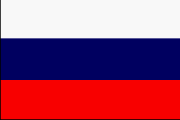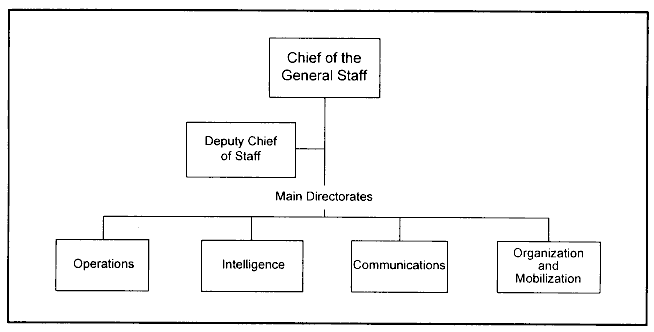





The president of the Russian Federation is the commander in chief, and executive authority over the military lies in the office of the president. The Government (the Council of Ministers) is responsible for maintaining the armed forces at the appropriate level of readiness. The State Duma exercises legislative authority through the Government. Direct leadership of the armed forces is vested in the Ministry of Defense, and the General Staff exercises operational control. The minister of defense exercises operational authority, and the General Staff implements instructions and orders.
By tradition dating back to the tsars, the minister of defense normally is a uniformed officer. The State Duma also seats a large number of deputies who are active-duty military officers--another tradition that began in the Russian imperial era. These combinations of military and civilian authority ensure that military concerns are considered at the highest levels of the Russian government. They also demonstrate that strict subordination of the military to civilian authority in the Western sense is neither a tradition nor a concern in Russia.
The Ministry of Defense directs the armed services and all military activities on a daily basis. It is responsible for fielding, arming, and supplying the armed services, and in peacetime all territorial commands of the armed forces reported to it. The Ministry of Defense has been staffed almost entirely by professional military personnel, and largely retains a monopoly on military information because Russia continues to lack independent defense research organizations frequently found in other countries. This monopoly gives high-ranking officers considerable influence with government leaders on issues, ranging from arms control to weapons development to arms sales abroad, that affect the position and prestige of the armed forces. The Ministry of Defense consists of the General Staff and a number of main and central directorates. The Ministry of Defense is managed by a collegium of three first deputy ministers, six deputy ministers, and a chief military inspector, who together form the principal staff and advisory board of the minister of defense.
The General Staff is a major link in the centralization of the Russian national command authority. It provides staff support and acts as the executive agency for the Supreme High Command. The forces in various theaters report through it to the Supreme High Command and the Supreme CINC. Contrary to the United States tradition of military authority derived strictly from the civilian sector, Russian General Staff officers exercise command authority in their own right. The staff is organized by functions, with each directorate and operating agency overseeing a functional area, generally indicated by the organization's title. During the Soviet era the General Staff consisted of four staff directorates. These were the main directorates for operations; intelligence; communications; and organization and mobilization. By 1996 the General Staff included fifteen main directorates and an undetermined number of operating agencies. In the late 1990s the Directorate of the Commander in Chief of the Land Force was abolished and the Main Directorate of the Land Force and the Main Directorate of Combat Training of the Armed Forces were established.Working with the staffs of each of the services, the Main Operations Directorate drafts detailed plans for strategic operations for the Supreme High Command. Once the Headquarters of the Supreme High Command approves the plans, the General Staff issues them to operational commanders as Supreme High Command directives. Because of the uncertainties of combat, the General Staff continually reevaluates and refines these directives. Its Main Organization and Mobilization Directorate determines the assets the force needs to perform strategic operations.
Like the Ministry of Defense, the General Staff is dominated by the Ground Forces. In wartime the General Staff would become the executive agent of the Supreme High Command, supervising the execution of military strategy and operations by subordinate commands. The General Staff would exercise direct control over the combat arms of the armed forces that operate strategic nuclear weapons and would coordinate the activities and missions of the armed services.

